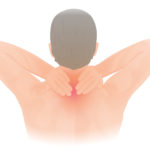
Work-related musculoskeletal disorders (WMSDs) are an important occupational health risk for dental professionals as the nature of the work requires sustained awkward postures and non-neutral wrist positions. While WMSDs are not limited to any specific body region neck, shoulder, lower back and wrists are commonly affected in dental professionals. Ergonomic interventions have been suggested to prevent their occurrence.
The aim of this Cochrane review was to assess the effect of ergonomic interventions for the prevention of WMSDs among dental care practitioners.
Methods
Searches were conducted in the Cochrane Central Register of Controlled Trials (CENTRAL), Medline, Embase, PsychoINFO, NIOSHTIC and NIOSHTIC-2, HSELINE, CISDOC, ClinicalTrials.gov and World Health Organization (WHO) International Clinical Trials Registry databases with no restrictions on language. Randomised controlled trials (RCTs) and quasi-RCTs conducted in adults practicing dentistry were considered. The primary outcomes were Number of workers with newly diagnosed WMSD (incident cases); Self-reported complaints of pain related to the musculoskeletal system ; Work functioning or disability assessed using outcome measures instruments, like the Oswestry Disability Index (ODI), Roland-Morris Disability Questionnaire (RMDQ) and others.
3 reviewers independently screened and selected studies, four reviewers independently extracted data with risk of bias being assessed by 2 reviewers using the Cochrane Tool. Mean difference (MD) and 95% confidence intervals (CI) were calculated for continuous outcomes and risk rations (RR) and 95%CI for dichotomous outcomes. The GRADE approach was used to assess quality of evidence for each outcome.
Results
- 2 RCTS involving 212 participants were included.
- 1 study was considered to be at high risk of bias the other at unclear risk.
- For physical ergonomic interventions
- One study (102 participants) provides very low-quality evidence that a multi-faceted intervention has no clear effect on dentists’ risk of WMSD in the thighs [ RR= 0.57(95%CI; 0.23 to 1.42], or feet RR= 0.64(95%CI; 0.29 to 1.41) when compared to no intervention over a six-month period
- Based on one study(110 participants) there is low-quality evidence of no clear difference in elbow pain [MD= −0.14 (95%CI; −0.39 to 0.11)] or shoulder pain [MD= −0.32(95% CI −0.75 to 0.11)]; in participants who used light weight curettes with wider handles or heavier curettes with narrow handles for scaling over a 16-week period.
- No studies evaluating the effectiveness of cognitive ergonomic interventions or organisational ergonomic interventions were identified.
Conclusions
The authors concluded: –
There is very low-quality evidence from one study showing that a multi-faceted intervention has no clear effect on dentists’ risk of WMSD in the thighs or feet when compared to no intervention over a six-month period. This was a poorly conducted study with several shortcomings and errors in statistical analysis of data. There is low-quality evidence from one study showing no clear difference in elbow pain or shoulder pain in participants using light weight, wider handled curettes or heavier and narrow handled curettes for scaling over a 16-week period.
We did not find any studies evaluating the effectiveness of cognitive ergonomic interventions or organisational ergonomic interventions.
Our ability to draw definitive conclusions is restricted by the paucity of suitable studies available to us, and the high risk of bias of the studies that are available. This review highlights the need for well-designed, conducted, and reported RCTs, with long-term follow-up that assess prevention strategies for WMSDs among dental care practitioners.
Comments
The Cochrane review has conducted a broad search strategy including several specific occupational safety and health databases (NIOSHTIC and NIOSHTIC-2) an health and safety databases (HSELINE, CISDOC). The prevalence of non-specific WMSDs in the dental profession is high and estimated to be between 49-92% it is also of concern that high levels of muscle and joint pain have also been reported in dental students in recent years. Given the cost of training dental professionals and the impact that WMSDs have on productivity, loss of earnings and quality of life as well as medical treatment and management costs it is perhaps surprising that so few good quality studies have been conducted. The reviews authors highlight the need for well conducted high quality studies in this area and provide a range of considerations for future research.
Links
Primary Paper
Mulimani P, Hoe VCW, Hayes MJ, Idiculla JJ, Abas ABL, Karanth L. Ergonomic interventions for preventing musculoskeletal disorders in dental care practitioners. Cochrane Database of Systematic Reviews 2018, Issue 10. Art. No.: CD011261.DOI: 10.1002/14651858.CD011261.pub2.
Picture credits
Neck pain” by rel=”nofollow”>Injurymap.
